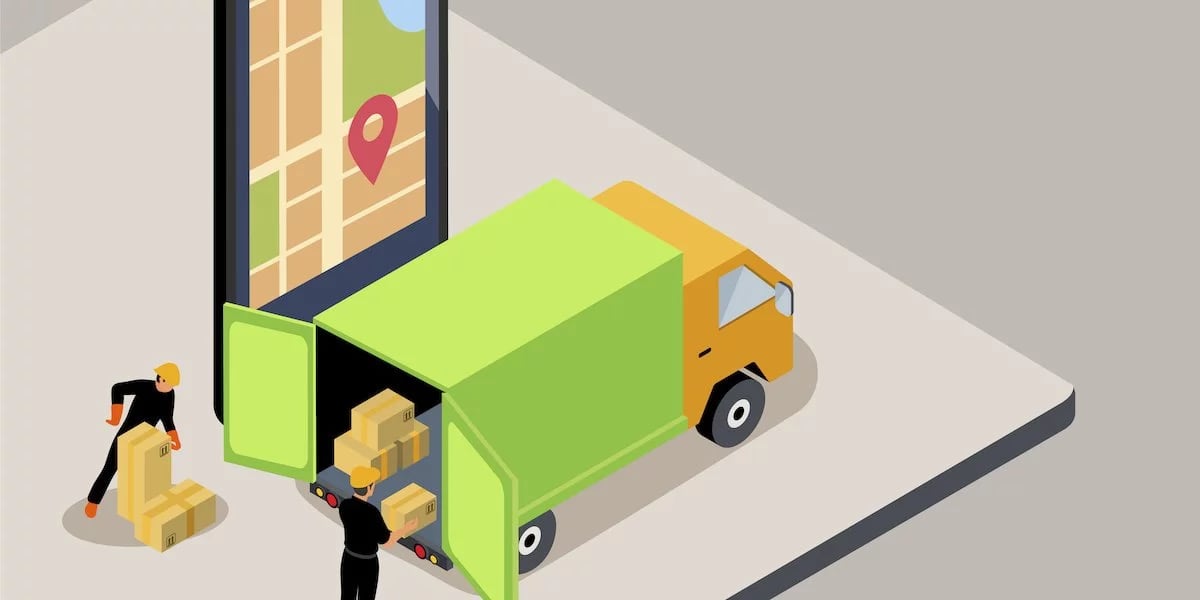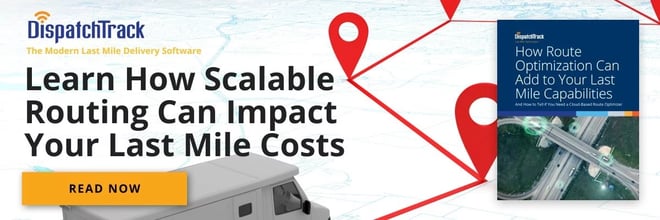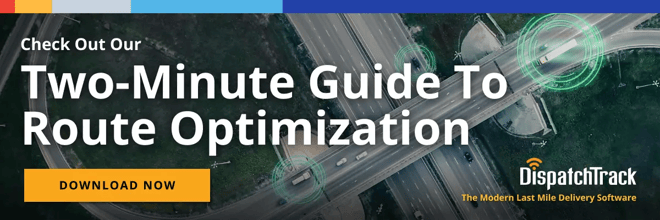Logistics service providers and shippers are constantly finding ways to minimize costs, increase profitability, and gain or maintain their competitive advantage. Route optimization is one of the most obvious ways to make this happen—but not all routing strategies, including static vs dynamic routing, are equally effective.

Route optimization isn't a new concept. There have always been various ways of optimizing routes. Historically, however, most businesses have relied on static routes that are relatively inflexible and thus incapable of meeting the challenges companies face in the 21st century. On the other hand, businesses that have already embraced dynamic routing are already enjoying many benefits, including reduced freight costs and higher profitability. Sadly, those that are relying on static, traditional route optimization measures are at risk of being left behind. Let's take a look at static vs dynamic routing and their key differences.
Static vs Dynamic Routing: Big Differences
Companies that are heavily dependent on manual route optimization processes face more pressure these days, given that moving freight now requires a more strategic and proactive approach than ever before.
Static routes, by their very nature, can’t account for the many factors influencing timely deliveries. They’re also prone to human error. Major problems arise when businesses fail to factor in the different aspects of shipping, including the following:
- Miscommunication between or among dispatchers, drivers, and customers
- Disparate technological solutions, hampering visibility on packages
- Last-minute changes in routes
- Unforeseen traffic, road, and weather conditions
Static routing may work for businesses with consistent and predictable volume and stops where delivery personnel can follow the same routes every single day. But there are very few businesses that can adhere to pre-set routes, and even if they can, it's often a waste of money, resources, and time. Why? Because routes that don’t change to reflect new conditions are not optimal by definition. Dynamic routing, on the other hand, offers you the flexibility to adapt to new circumstances in an efficient and timely way. Here’s how that plays out in practice:

Dynamic Routing Software: The Key Benefits
Better Management of Unexpected Events
Like we said above, static routing can’t help fleet managers respond effectively and quickly to any unforeseen circumstances that can affect drivers' schedules, but dynamic routing can. For example, if a delivery truck breaks down in between deliveries, fleet dispatchers or managers can re-optimize routes quickly by reassigning jobs to nearby drivers. This is possible with the right real-time dynamic route optimization app or software. The software can also redirect drivers to other roads or find the most efficient routes when there are sudden downpours, road closures, or vehicular accidents.
A delivery management solution can also help in managing unexpected events as well. For example, managers can set up alerts when drivers who go over the speed limit. This allows managers to correct the unsafe behavior, minimizing the possibility of driver-caused accidents.
Additionally, setting up alerts in the delivery management solution keeps drivers safe while helping to reduce gas expenses, vehicle repair costs, and insurance rates. Cutting down on these expenses can go a long way in maintaining a healthy balance sheet.
Automated and Precise Stop Sequencing
Sequencing is an integral component of route optimization. Fleets that don't sequence drivers' stops correctly (which is often the practical result of static routing) tend to miss promised delivery windows. This problem is exacerbated when the delivery drop off point is located far from the hub or depots. And when drivers are in unfamiliar new areas, these suboptimal sequences can make on-time delivery close to impossible.
Plus, drivers face greater challenges when new deliveries are added to their workload without much thought about proper sequencing. In contrast, dynamic routing software automates sequencing, taking a driver's full workload into consideration. Beyond the driver's schedule and workload, the last mile delivery solution considers other delivery constraints like traffic conditions, weight and load capacity of delivery vehicles, left turns, road conditions, etc.
Dynamic route optimization finds the most efficient routes in a matter of seconds or minutes. Route planners simply need to input the customers' address, and the right solution will provide the best routes for drivers to follow.

Accurate Expected Time of Arrival (ETA)
Consumers' expectations have changed a lot in just the past few years. They now want fast shipping and more reliable ETAs. Once, they may have been content with a delivery window of 8:00 am to 2:00 pm, but now prefer a promised delivery of 10:00 to 10:30 am. Static routing provides a long delivery window, but customers these days can't be expected to wait for several hours just to receive a couch, or a large appliance, or what have you.
For the reasons we’ve been discussing above, dynamic route optimization can provide shorter delivery time windows and more accurate ETAs. The right delivery routing software offers companies efficiently planned routes, which means knowing the exact time needed to reach a customer long before drivers leave for deliveries. This function allows businesses to provide more accurate ETAs.
Of course, dynamic routing works most effectively when you’re able to track vehicles in real time. This, in turn, empowers dispatchers and managers to act quickly when a driver is already falling behind schedule and will likely miss the promised delivery window. Managers and dispatchers can then reroute the driver or let the customer know of the possible delay ahead of time.
Crucially, giving accurate ETAs to consumers greatly lessens the likelihood of missed deliveries: By providing customers with shorter time frames, you allow them to block off their schedule to sign for and accept deliveries without a huge amount of inconvenience. This helps businesses improve their first-time delivery rates and eliminate the costs incurred in second or third delivery attempts, to say nothing of reverse logistics costs. Plus, delivering successfully the first time tends to result in happier customers, thus more loyal patrons.
There's a long list of the benefits of real-time dynamic route optimization software, but the tl;dr is this: dynamic route optimization results in cost savings and high customer satisfaction.
The slightly longer version is: Dynamic routing, which is made possible by advanced delivery routing software, minimizes labor, vehicle repair, and fuel costs and reduces expenses on delivery re-attempts, among others. Plus, it helps businesses satisfy consumer demands of fast, accurate and reliable shipping, which creates brand loyalty. Businesses can have all these benefits if they understand static vs dynamic routing and make the shift toward dynamic route optimization.